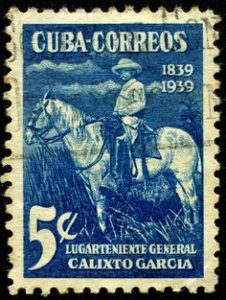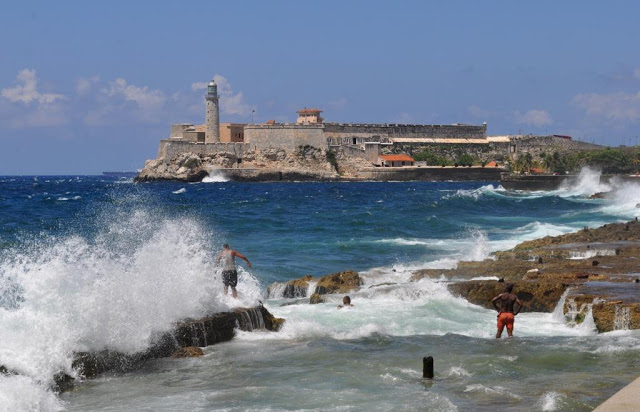PHILATELY: THE FIRST POSTAGE STAMPS THAT CIRCULATED IN CUBA.
In the month of April 2016, counts as the 161th years of the circulation in Cuba of the first postage stamps, coming from Spain, which had printed the image of Queen Isabel II. In this way, payment of the prior postage of correspondence was established.
There are other types of stamps, called prosecutors, such as the sealed paper and those used in judicial law, with the purpose of raising funds for the coffers of the Crown. The first, known in Cuba, dating from 1646.
Since the postal reform that introduced England in 1840, Spain adopted ten years later, the prior postage of correspondence with postage stamps and the reduction of tariffs, measures which then extended to Cuba, Puerto Rico and the Philippines.
These stamps are dark green, light green and red, colors based on the value of each, and are the most appreciated by collectors, due to their variety and falsifications.
He is known that José Pérez Varela was the designer of the first stamps, which in addition to the image of the Queen, had other tiny ornaments, to hinder the work of counterfeiters.
Spanish stamps also circulated in Puerto Rico and the Philippines. Leading Cuban researchers such as José Luis Guerra Aguiar and Carlos Echenagusía studies for the exact location of each of the stamps in the original plates.
In April 1855 is the implantation of a postal service in the Cuban capital known as local mail from Havana, who used enabled postage stamps to a quarter of real, which became the first enabled stamps of the world.
The creation of this internal email allowed communication with the outer suburbs, from the most distant points others covering the entire population. With them, there is a need to create mailboxes, the use of stamps and postmen, for the distribution of correspondence, as well as transport and its subsequent service to more distant towns.
Cuban Guerra seals.
The first Cuban stamp was the hallmark of the insurgent mail, issued in 1874, with a value of 10 cents.
The broadcast featured one hundred thousand copies, as provided by the revolutionary General Board and printed according to the existing parameters of the Continental Bank Note Company. The House recorder that was the impression of the securities issued in those years, later absorbed by the American Bank Note Company on February 4, 1879.
There is also literature on the so-called enabled “Port-au-Prince”, (today Camagüey), authorized by the American administration, to be enabled in the city of the same name and which could be used there and in the surrounding area, until the beginning of 1899. This was an interim solution, as long as Cuba reached American seals, to continue with the postage of correspondence of the occupants of the island.
Mail insurgent, emerged in the heat of the war launched on October 10, 1868, in Eastern Cuba, allowed the Organization of a communications system, used chains of postilions or messengers on foot or on horseback, who transported the orientations of the remote military Cuban to subordinate units.
A few months of the uprising, the task of organizing the transfer of correspondence to the interior of the island, was entrusted to the camagüeyano Vicente Mora PEAR while stamps helped raise funds for the war.
The Cuban insurgents mail seals are also of great value for philatelists interested in the Cuban postal history.
161 years of this extraordinary service, which at some point in our lives we use, without thinking that like all things, mail, mailboxes, postmen and the seals have their own history, such as this that we have counted with the collaboration of scholars have passed. These details enrich Cuban Philately and encourage collectors to inquire about the origin of our beautiful stamps.
Agencies/RHC/InternetPhotos/SellosCubanos/Arnoldo Varona/TheCubanHistory.com
THE CUBAN HISTORY, HOLLYWOOD.
FILATELIA: LOS PRIMEROS SELLOS DE CORREOS QUE CIRCULARON EN CUBA.
En el mes de abril de 2016 se cumplen 161 años de la circulación en Cuba de los primeros sellos de correos, provenientes de España, que llevaban impresos la imagen de la Reina Isabel II. De esta forma, quedaba establecido el pago del franqueo previo de la correspondencia.
Existen otros tipos de sellos, llamados fiscales, como son el papel sellado y los utilizados en el derecho judicial, con el propósito de recaudar fondos para las arcas de la Corona. El primero, conocido en Cuba, data de 1646.
A partir de la reforma postal que implantó Inglaterra en 1840, España adoptó diez años después, el franqueo previo de la correspondencia con sellos postales y la reducción de las tarifas, medidas que luego extendió a Cuba, Puerto Rico y Filipinas.
Estas estampillas llevan colores verde oscuro, verde claro y rojo, según el valor de cada una y son las más apreciadas por los coleccionistas, por su variedad y falsificaciones.
Se conoce que fue José Pérez Varela el diseñador de los primeros sellos, que además de la imagen de la Reina, tenían otros minúsculos ornamentos, para dificultar la labor de los falsificadores.
Las estampillas españolas circularon también en Puerto Rico y Filipinas. Destacados investigadores cubanos como José Luis Guerra Aguiar y Carlos Echenagusía realizaron estudios para la ubicación exacta de cada uno de los sellos en las planchas originales.
En abril de 1855 surge la implantación de un servicio postal en la capital cubana conocido como el correo local de La Habana, que utilizó sellos de correos habilitados para un cuarto de real, los cuales se convirtieron en los primeros sellos habilitados del mundo.
La creación de este correo interior permitió la comunicación con los barrios extramuros, desde los más distantes puntos a otros que abarcaran toda la población. Con ellos, surge la necesidad de crear buzones, la utilización de sellos y carteros, para la distribución de la correspondencia, además del transporte y su posterior servicio a poblados más lejanos.
Sellos de Guerra cubanos.
La primera estampilla cubana fue el sello del Correo Insurrecto, emitido en 1874, con un valor de 10 centavos.
La emisión contó con cien mil ejemplares, según lo dispuesto por la Junta General Revolucionaria e impreso de acuerdo a los parámetros existentes de la Continental Bank Note Company. La casa grabadora que realizó la impresión de los valores emitidos en esos años, posteriormente absorbida por la American Bank Note Company el 4 de febrero de 1879.
Existe también bibliografía sobre los llamados habilitados de “Puerto Príncipe”, (hoy Camagüey), autorizados por la Administración norteamericana, para que se habilitaran en la ciudad del mismo nombre y que pudieran utilizarse allí y en los alrededores, hasta inicios de 1899. Esta fue una solución provisional, en tanto llegaran a Cuba los sellos norteamericanos, para continuar con el franqueo de la correspondencia de los ocupantes de la Isla.
El correo insurrecto, surgido al calor de la guerra iniciada el 10 de octubre de 1868, en el oriente cubano, permitió la organización de un sistema de comunicaciones, que utilizaba cadenas de postillones o mensajeros a pie o a caballo, quienes transportaban las orientaciones del mando militar cubano a las unidades subordinadas.
A los pocos meses del alzamiento, se encomendó al camagüeyano Vicente Mora Pera la tarea de organizar el traslado de la correspondencia al interior de la isla, mientras que las estampillas contribuían a recaudar fondos para la guerra.
Los sellos del correo de los insurrectos cubanos son también de gran valor para los filatelistas interesados en la historia postal cubana.
Han transcurrido 161 años de este extraordinario servicio, que en algún momento de nuestras vidas utilizamos, sin pensar que como todas las cosas, el correo, los buzones, los carteros y los sellos tienen su propia historia, como esta que hemos contado, con la colaboración de estudiosos del tema. Estos detalles enriquecen a la filatelia cubana y anima a los coleccionistas a investigar sobre el origen de nuestros hermosos sellos.
Agencies/RHC/InternetPhotos/SellosCubanos/Arnoldo Varona/TheCubanHistory.com
THE CUBAN HISTORY, HOLLYWOOD.



 * PHILATELY: The First Postage Stamps that Circulated in Cuba. PHOTOS. + FILATELIA: Los Primeros Sellos de Correos que circularon en Cuba. FOTOS.
* PHILATELY: The First Postage Stamps that Circulated in Cuba. PHOTOS. + FILATELIA: Los Primeros Sellos de Correos que circularon en Cuba. FOTOS.





